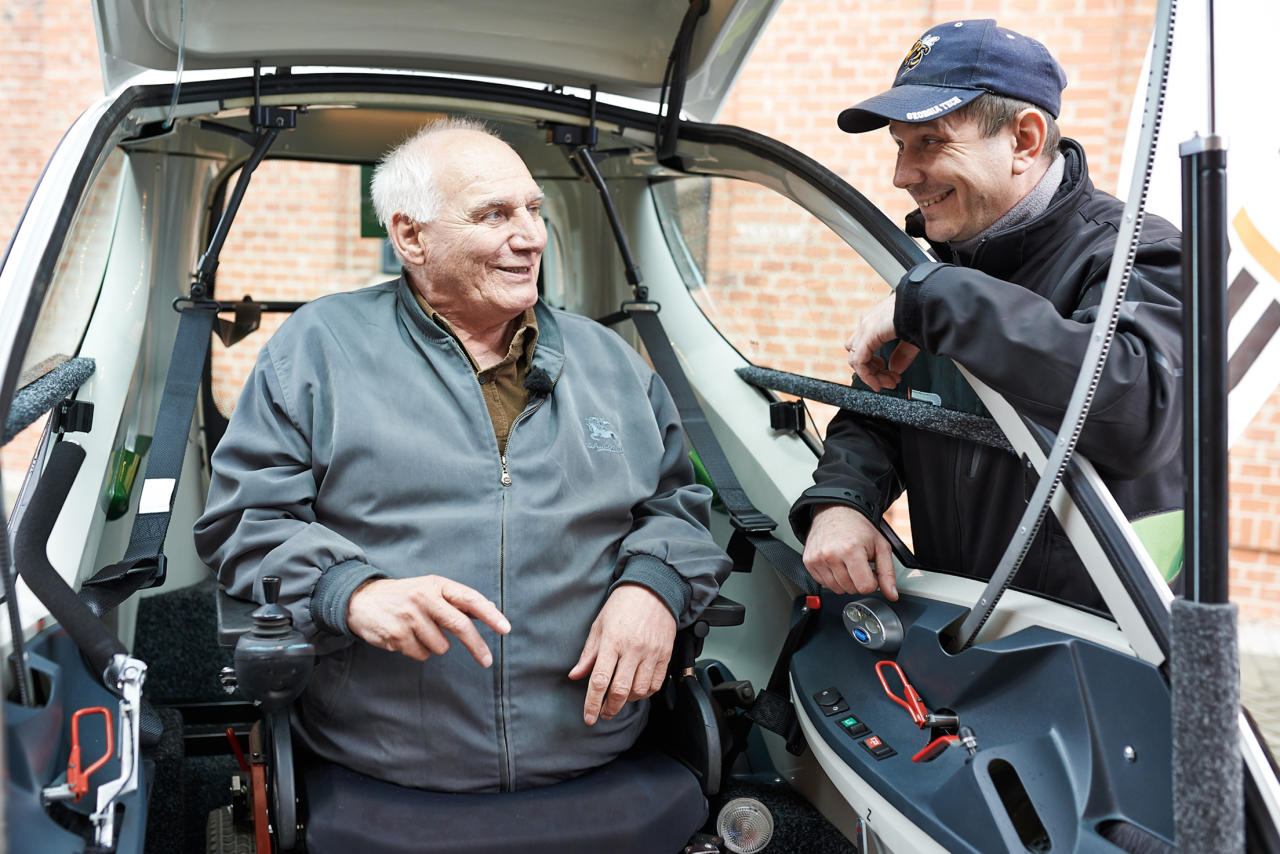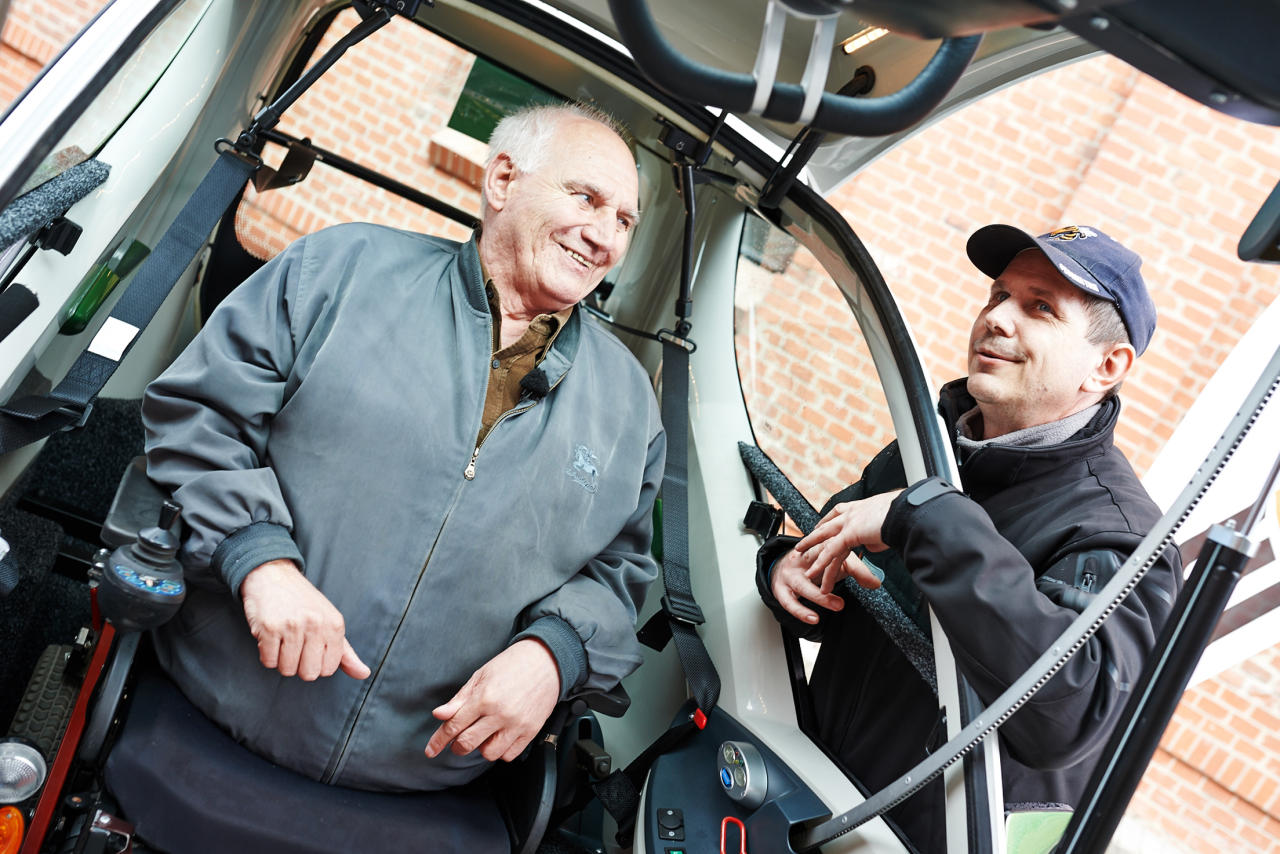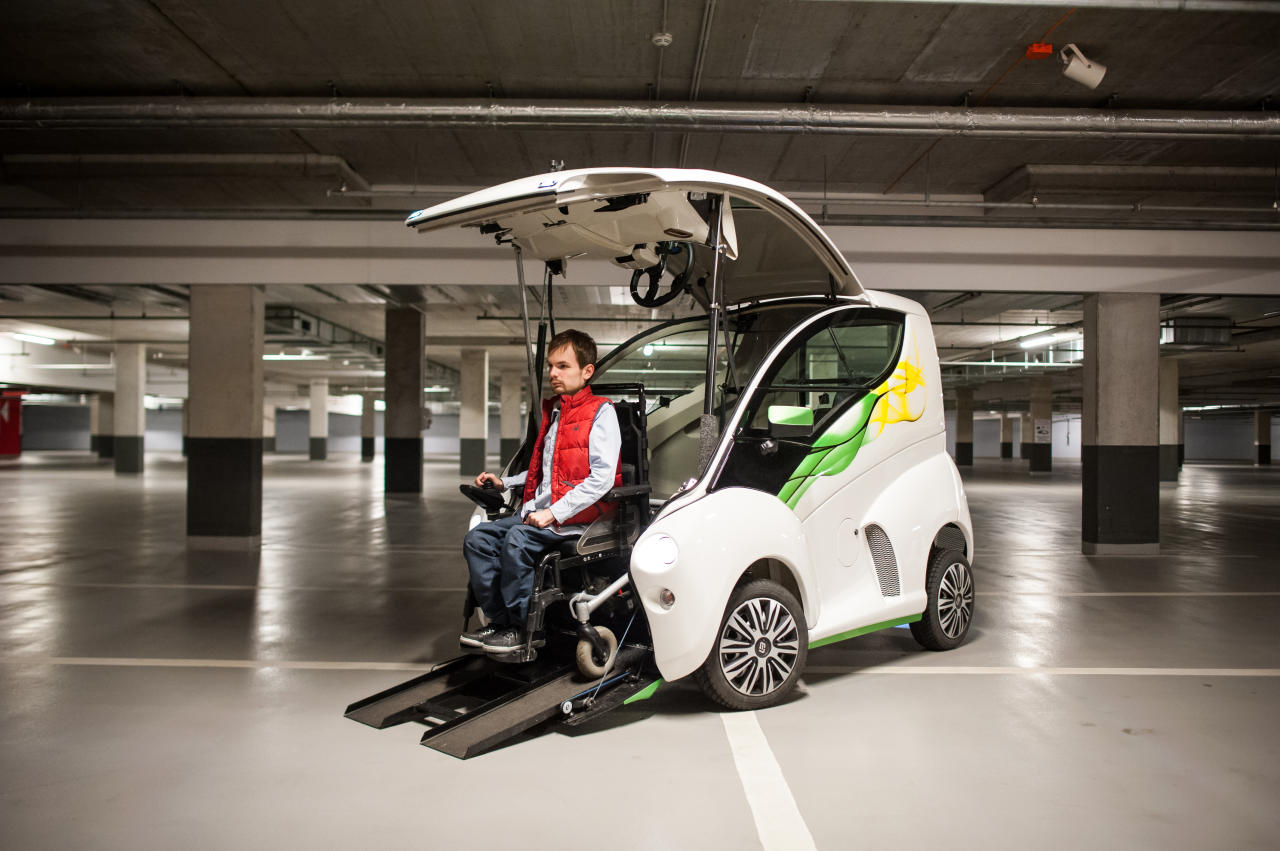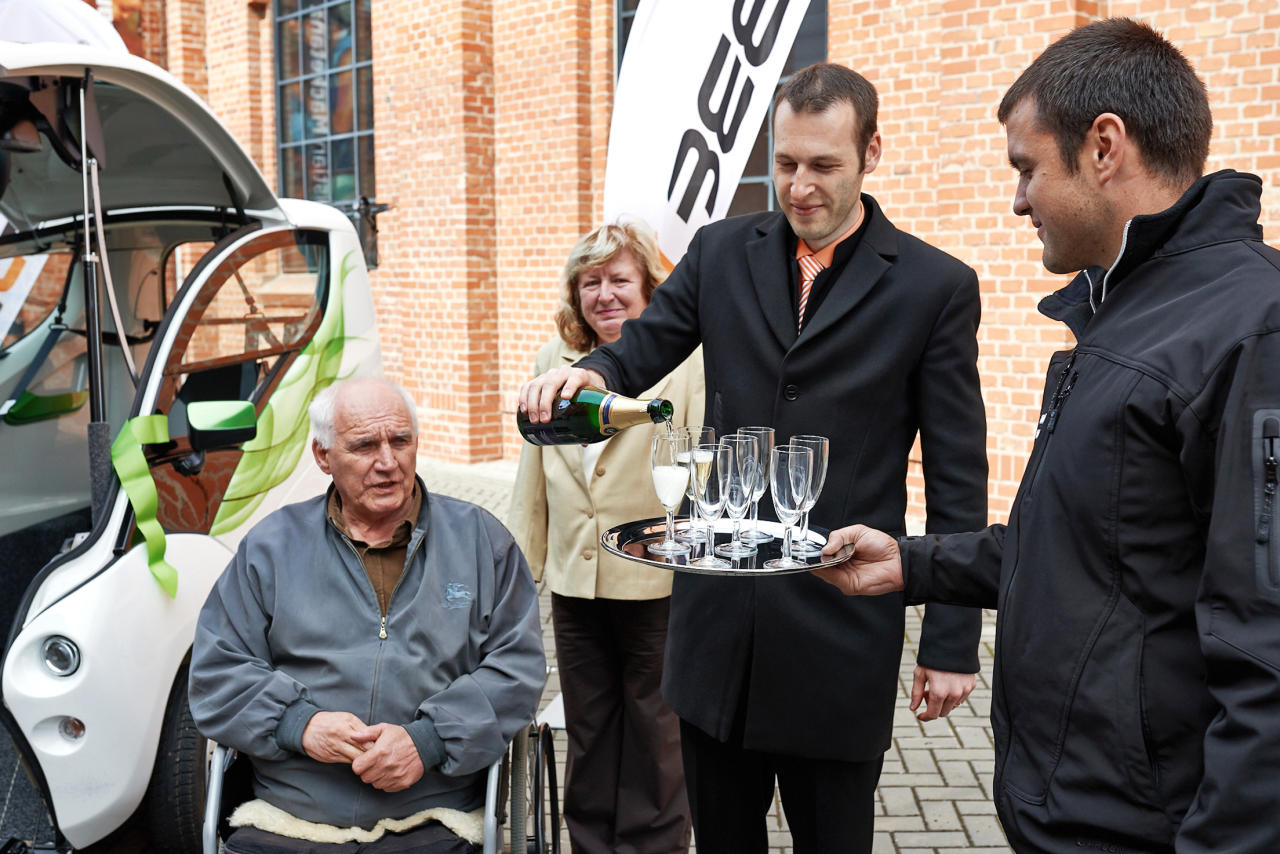Driving from a wheelchair
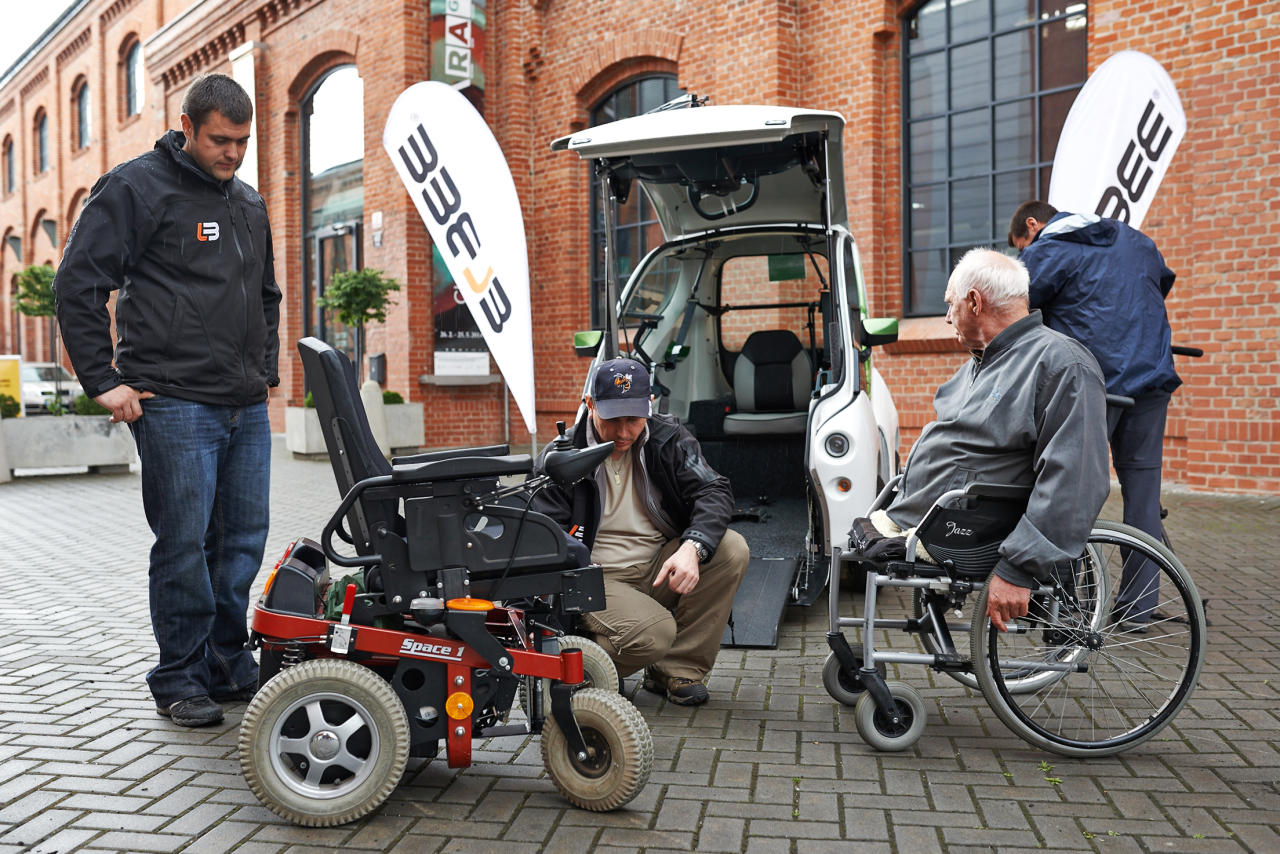
By Jana Klímová and Magdaléna Fajtová
Respekt
Many men have boyhood dreams of constructing their own car. The vast majority grow out of the idea, or settle for a go-kart. But Ladislav Brázdil and his two sons made sure their dreams came true: Elbee Mobility, their family business in the small town Loštice in the Olomouc district of North Moravia, the Czech Republic, is now manufacturing its own Elbee cars and is even beginning to tap into the world market.
The Elbee is a weird vehicle. It opens from the front, and you don’t climb in, but ride straight into it with a wheelchair. It’s an unrivaled concept that saw the Brázdils and the Elbee voted among the top 100 bright ideas in Central and Eastern European countries at the end of 2015.
Elbee Mobility was a spin-off from the business ZLKL (a Czech abbreviation for Loštice Light Construction Works), an outfit that originally had nothing to do with cars.
Built up by Ladislav Brázdil Senior on the ruins of agricultural buildings that used to be part of a local collective farm, the family business today has about two hundred employees and an annual turnover in excess of 350 million CZK (more than 14 million US dollars).
Ladislav Brázdil Senior bought the farm with a business partner when it collapsed after the Czech revolution. His big break came in 2003 when he decided to buy out his co-owners’ shares. Then, instead of reconditioning the old machinery, Brázdil Senior invested in modern and more reliable technologies.
When a design engineer asked him about an idea he had in mind, Brázdil Senior went after his dream of creating his own product: an urban micro-car designed specifically for disabled drivers.
“This was it,” says Brázdil Senior, remembering that first meeting. “It was something unique that we as an engineering business could produce in part, and at the same time it supported our own development as a manufacturing business.”
The road to assembling the final product was a long one. The decision to make a front-opening vehicle meant considering how to raise both the hood and steering column to allow wheelchair users to drive inside.
This direct driver access to the vehicle was a fundamental principle of the whole project. Ordinary vehicles adapted for wheelchair users simply do not resolve the problem of what to do with the wheelchair. If wheelchair users don’t have enough strength to stow their wheelchairs themselves, they need someone to help them.
A major advantage of front-end opening is that wheelchair users can park the car facing the sidewalk. If they have rear-end opening they can reverse up to the curb, but for many wheelchair users, this is a very complex operation, especially if they have restricted neck movement. With face-forward parking, the driver can see where he or she is going and where to release the wheelchair ramp so as to ride out of the car safely, among pedestrians on the sidewalk, and not onto the roadway.
Homologation is the approval process of certifying vehicles as roadworthy, and this was essential when the Elbee was still in development. Official certification was granted for the Czech Republic in 2010, for a vehicle with a two-stroke engine capable of a top speed of around 50 miles an hour. Three years later the car was approved for the entire European Union. The first model went to market at the end of 2014.
The historic first customer was František Trunda from Brno, who lost both legs below the hips years ago, and for whom the car has provided a renewed sense of freedom. “It’s changed my life,” he says. “I can now go for a drive out of town or go to see my brother. I don’t have to wait until someone has time to go with me.”
So far, the business has produced many vehicles which are now on the roads throughout Europe, namely in France, Italy, Switzerland and the United Kingdom.
One limiting factor and a risk for the project, specifically in the Czech market, is the price of the car. The current price is 600 thousand CZK (almost 25 thousand US dollars), and although the effective purchase price can be cut by two-thirds thanks to various subsidies and reliefs, it is still cheaper for wheelchair users to modify a normal car, and indeed many have already drawn on all available subsidies to do this.
The entire project has already cost the family business 200 million CZK. But further investors are lining up who might boost development, perhaps by introducing serial production or joystick control.
“We’re making something that’s really emotive,” says Ladislav Brázdil Junior, “and this inspires us to continue the project. We’ve had reactions from people saying that thanks to the Elbee they’re now learning to drive and they are regaining strength and ability. In our small way we’re restoring their lives.”
Here we are to serve you with news right now. It does not cost much, but worth your attention.
Choose to support open, independent, quality journalism and subscribe on a monthly basis.
By subscribing to our online newspaper, you can have full digital access to all news, analysis, and much more.
You can also follow AzerNEWS on Twitter @AzerNewsAz or Facebook @AzerNewsNewspaper
Thank you!

